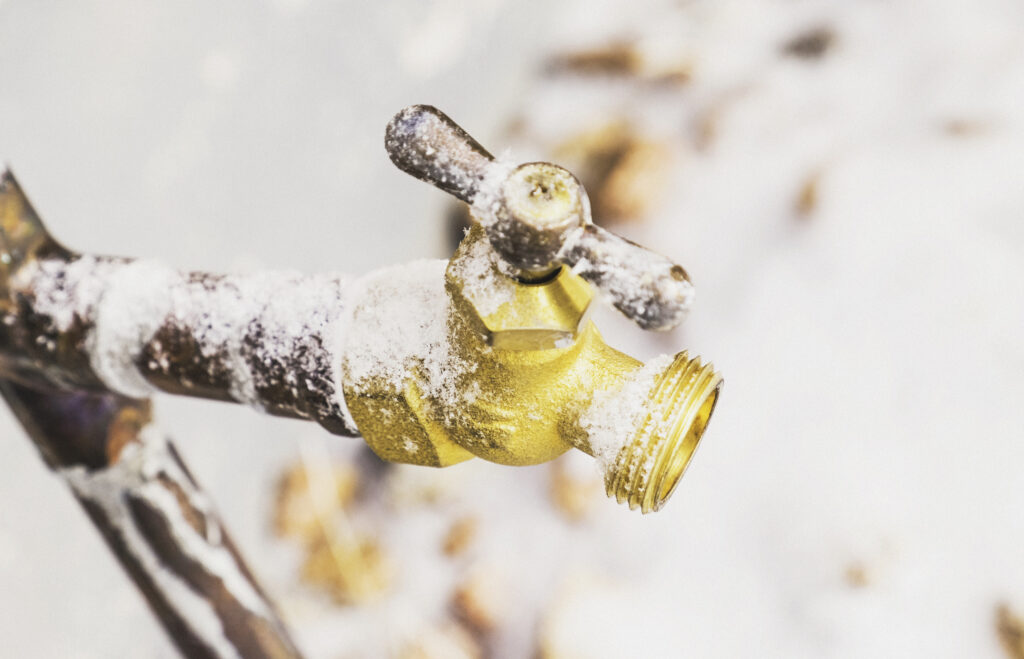Protect Your Plumbing During Winter
Winters can be tough on your home’s plumbing when temperatures drop below freezing. Even though North Texas usually has relatively mild winters, we still have the occasional cold snaps and the occasional arctic deep freeze (February 2021 anyone?). Don’t be caught off guard – frozen water pipes are not only inconvenient, they can be costly.

How can you protect pipes from freezing?
Winter brings with it beautiful snowfall, cozy evenings by the fireplace, and the joys of the holiday season. However, the colder months can also pose challenges for your home, particularly when it comes to your plumbing system. Freezing temperatures can cause pipes to burst, leading to significant damage and expensive repairs. To safeguard your plumbing and ensure a stress-free winter, it’s essential to take proactive measures to protect your pipes. In this blog, we will provide you with some valuable tips on how to safeguard your plumbing during the winter months.
- Insulate Exposed Pipes:
One of the primary precautions you can take to protect your plumbing is insulating exposed pipes. Pipes located in unheated areas such as, attics, or crawl spaces are more susceptible to freezing. Insulating them with foam sleeves or wrapping them with heat tape can provide an additional layer of protection. By preventing the cold air from reaching your pipes, you reduce the risk of freezing and subsequent bursting.
- Keep a Consistent Indoor Temperature:
Maintaining a consistent indoor temperature throughout the winter is crucial for plumbing protection. Even if you’re traveling or trying to save on heating costs, avoid turning off the heat entirely. Set your thermostat to a temperature above freezing, ideally around 55°F (13°C), to keep the pipes warm. Additionally, if you have any rooms that are seldom used, keep the doors open to allow warm air circulation and prevent cold spots from forming.
- Drip Faucets and Allow Water Flow:
When the temperature drops significantly, allowing faucets to drip can help prevent pipe freezing. Allowing a small, steady flow of water through the pipes can relieve pressure and minimize the risk of freezing. Although it might seem counterintuitive to waste water, the cost of running a faucet is minimal compared to the expenses associated with a burst pipe and subsequent repairs.
- Disconnect and Drain Outdoor Hoses:
Outdoor hoses and faucets are highly susceptible to freezing during winter. To prevent water from freezing in these fixtures and causing damage to the connected pipes, it’s crucial to disconnect and drain all outdoor hoses. Close the shut-off valve for outdoor faucets and drain any residual water from the pipes. Store hoses in a dry place to prevent cracking or damage from the cold.
- Seal Cracks and Openings:
Inspect your home for any cracks or openings near your plumbing that could expose pipes to cold air. Check windows, doors, foundation cracks, and any other potential entry points for cold air. Use weatherstripping, caulk, or insulation to seal these gaps and keep the cold air out. Properly insulating and sealing your home not only protects your plumbing but also helps improve energy efficiency.
- Open Cabinet Doors:
The plumbing located in your kitchen and bathroom cabinets is often situated against exterior walls, making it susceptible to freezing. To allow warm air to circulate around these pipes, open the cabinet doors during periods of extreme cold. This simple step can help maintain a higher temperature around the pipes and reduce the risk of freezing.
Protecting your plumbing during the winter is vital to avoid costly repairs and potential water damage to your home. By following these essential tips, such as insulating pipes, keeping a consistent indoor temperature, allowing faucets to drip, and disconnecting outdoor hoses, you can minimize the risk of frozen pipes and bursting. Remember to inspect your home for cracks, seal openings, and open cabinet doors to promote proper air circulation. By taking proactive measures, you’ll ensure a smooth and stress-free winter, protecting both your plumbing system and your home investment.


